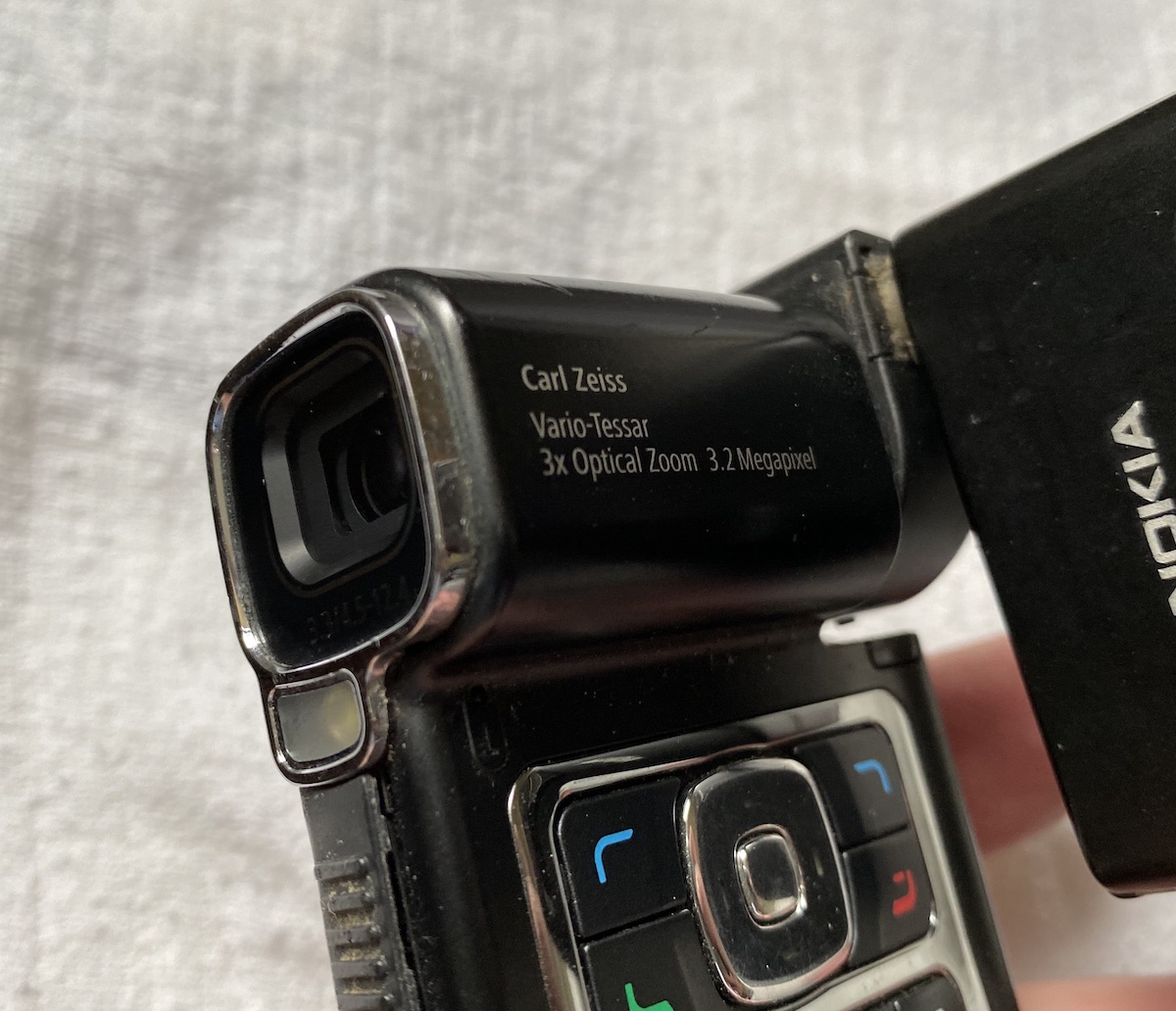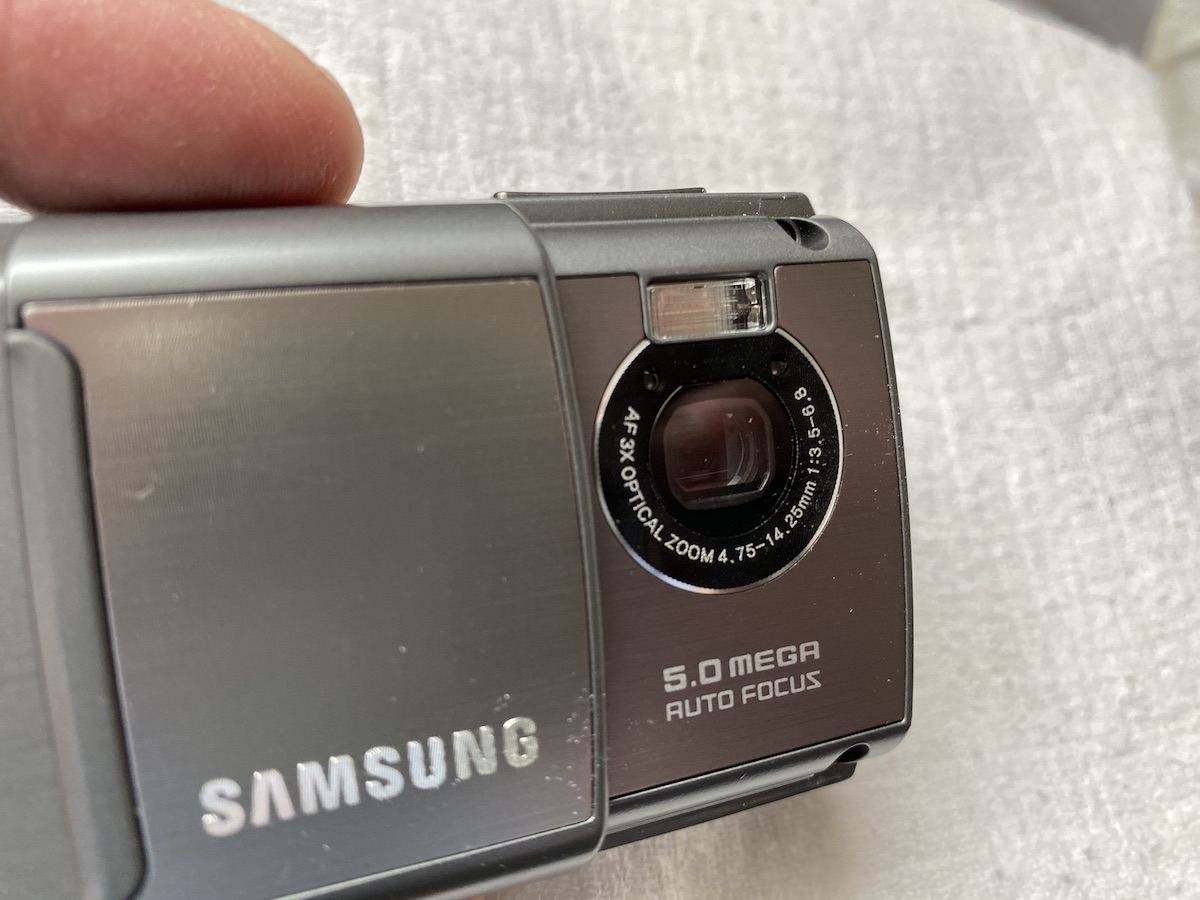
The camera module of my 14 year old Symbian/S60-running Nokia N93 with continuous zoom - a little battered and grubby after one and a half decades, but still working fine!
Now, the smartphone world didn't only plump for PureView-like high megapixel sensors, since these can only take lossless zoom 'so' far. Yes, 64 and now 108MP sensors are becoming standard for the main lens in a decent smartphone camera system. But we've seen in recent times the addition of extra, supplementary cameras, both ultra-wide and (here) telephoto lenses. 2x, 3x, then (with folded 'periscope' optics) 5x and 10x have all been announced and coming on the market, with generally very decent results.
But there's a problem with these systems. A typical set-up might be that on the Huawei P30 Pro, from 2019, a well known contender and one I have a lot of experience with: a 40MP main sensor, pixel-binned down to 10MP, plus 8MP 5x zoom periscope telephoto (and ultra-wide). When framing a shot with it, zooming in to about 2x zoom produces decent enough results - at which point your 10MP output is using 1:1 pixel data from the sensor, even though the colouring is compromised by the blocks of 'quad' pixels with the same colour filter. Then, as you zoom in from 2x to 4.9x, the output photo gets more and more uncertain - it's traditional, blocky digital zoom. And it's only when you get to 5x and beyond that the P30 Pro can start to use that 'periscope telephoto' lens. This produces decent results in good light from 5x to 10x, in my opinion.
But that's not good enough - think about the shots you take (people, pets, landscapes) and the framing you've used in the past. I'll bet that over half were taken without zoom, with most of the rest taken with modest (2x, 3x) zoom. Which is partly why so many phone models from 2018 to the present day come/came with a simple 2x telephoto in addition to the main lens - it adds the most common zoom factor.
It turns out that the use cases for a 5x or 10x telephoto camera in the phone are extremely niche. Essentially shooting birds and animals without spooking them! But all those slightly zoomed shots (2x, 3x) will be rather sub-optimal and it's clear that a different approach is needed, I contend.
Which is where a genuine continuous zoom periscope camera would be very handy indeed. And this is what Chinese company group O-Film have announced.
From a GSM Arena post:
O-Film demonstrated a periscope lens module for smartphones that offers continuous zoom instead of being locked at a specific focal length like current periscopes are. And the module is only 5.9 mm thick. The module can smoothly go between 85mm and 170mm (in 35mm equivalent) with the lens aperture changing from f/3.1 to f/5.1. To put that in perspective, the Xperia 1 II has a 70mm tele lens, the Huawei P40 Pro a 125mm lens and the P40 Pro+ a 240mm lens. O-Film’s module will provide 3x to 7x magnification compared to a typical wide camera. The company claims that it can also manufacture periscope designs with 3-5x, 5-8x and 3.5-9.5x zoom ranges.

All very impressive then - 3x is OK as a starting point as long as the main sensor has some headroom in terms of smart-cropped zoom. So a 108MP sensor, for example, which claims to offer up to 3x with true lossless 'PureView' capability - and then this periscope arrangement takes over for gradual and genuine zoom from 3x to 7x.
O-Film even included a photo of the actual module:

The next question, of course, is when we'll see this in actual shipping smarthones. My guess would be seeing this in an announced product before the end of 2020, and relatively common in flagships announced throughout 2021.
Which is a while yet. So in the meantime we'll have to make do with the current crop of hardware. Of note is that at least half the new flagships I get in for review for The Phones Show now have some pretense at significant zoom, even if it's often tempered by 'grey areas', as mentioned above. So there will be plenty more attempts at 'making do' before this O-Film camera unit arrives in the real world.
PS. I used the Nokia N93 above because I was struggling to think of many other smartphones with cameras with genuine continuous zoom lens. There was the Samsung G-810 (which I also own, shown below, also running Symbian and S60), but can you think of any others?

